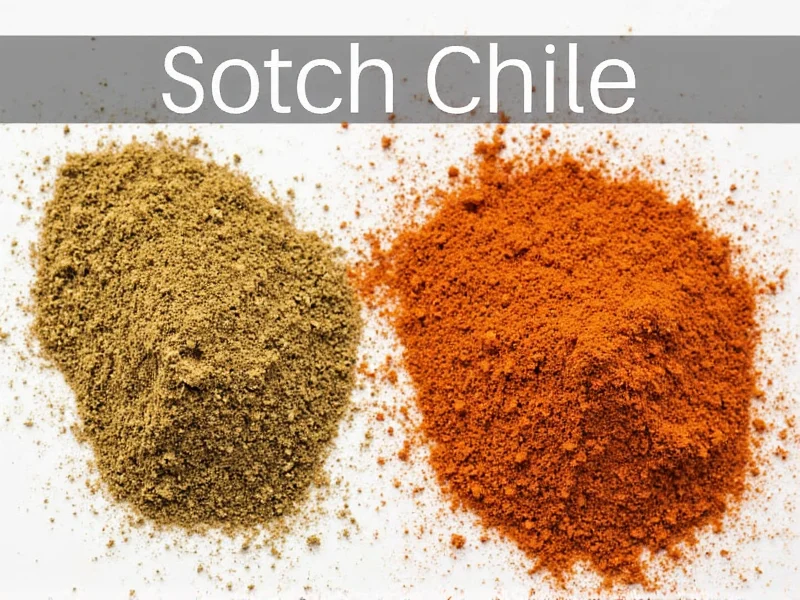Hatch chiles, celebrated as the crown jewel of New Mexico's agricultural heritage, deliver a distinctive flavor profile that combines earthy, slightly sweet notes with variable heat. Understanding their spice level is essential for both home cooks and professional chefs working with this seasonal specialty. Unlike standardized commercial peppers, hatch chiles exhibit remarkable heat variation even within the same harvest, making their Scoville rating more of a spectrum than a fixed number.
The Science Behind Hatch Chile Heat
Capsaicin concentration determines a pepper's heat level, measured in Scoville Heat Units (SHU). Hatch chiles belong to the Capsicum annuum species and primarily include varieties like 'Blossom', 'Sandia', and 'No. 6'. Their heat range spans from barely detectable (1,000 SHU) to moderately spicy (8,000 SHU), with most falling between 2,500-5,000 SHU. This places them generally milder than jalapeños (2,500-8,000 SHU) but hotter than poblanos (1,000-2,000 SHU).
Comparing Hatch Chile Heat to Common Peppers
| Pepper Variety | Scoville Heat Units (SHU) | Heat Level Comparison |
|---|---|---|
| Hatch Green Chile (average) | 1,000-8,000 | Mild to medium |
| Jalapeño | 2,500-8,000 | Moderate (often hotter than average hatch) |
| Poblano | 1,000-2,000 | Mild (typically milder than hatch) |
| Serrano | 10,000-23,000 | Hot (significantly hotter than hatch) |
| Cayenne | 30,000-50,000 | Very hot (much hotter than hatch) |
Factors Influencing Hatch Chile Spice Level
Several elements affect the heat intensity of hatch chiles, explaining why two peppers from the same batch might taste dramatically different:
- Ripeness stage: Green hatch chiles (harvested early) tend to be milder (1,000-4,000 SHU), while red hatch chiles (fully mature) often reach 5,000-8,000 SHU as capsaicin concentration increases with maturity
- Growing conditions: Stressors like drought, temperature extremes, and nutrient deficiencies can increase capsaicin production, making peppers hotter
- Specific variety: 'Sandia' hatch chiles typically run milder (2,000-4,000 SHU) while 'No. 6' varieties often reach 5,000-8,000 SHU
- Plant position: Peppers growing on the sun-exposed side of the plant usually develop more heat than shaded counterparts
- Soil composition: Volcanic soils in the Hatch Valley contribute to distinctive flavor but don't necessarily increase heat
Practical Implications for Cooking
Understanding hatch chile spice level helps home cooks adjust recipes appropriately. When working with fresh hatch chiles:
- Always taste a small piece before adding to dishes—this hatch green chile spice scale variability means visual inspection isn't reliable
- Remove seeds and white membranes (placenta) where capsaicin concentrates to reduce heat significantly
- For cooking with mild hatch chiles, use 2-3 peppers per serving; for hotter varieties, start with half a pepper and adjust
- Balance heat with dairy (sour cream, cheese) or starches (potatoes, rice) which bind capsaicin molecules
- Roasting doesn't reduce heat but caramelizes sugars, creating a perception of milder flavor
Regional Differences in Heat Perception
The question how hot are New Mexico hatch chiles often yields different answers depending on regional expectations. In New Mexico, where hatch chiles originate, locals frequently describe even moderately hot varieties as “mild” by local standards. This cultural context explains why some visitors find New Mexican cuisine unexpectedly spicy. The state's official chile classification system recognizes four heat levels: mild, medium, hot, and extra hot—with “hot” hatch chiles still falling below many commercial jalapeño varieties.
Debunking Common Misconceptions
Several myths persist about hatch chile heat. Contrary to popular belief, hatch chiles aren't inherently hotter than serrano peppers—serranos typically range from 10,000-23,000 SHU, making them consistently hotter. Similarly, the notion that all red hatch chiles are hotter than green ones isn't universally true; while ripeness generally increases heat, growing conditions can override this pattern. The most reliable method to assess hatch chile heat level compared to jalapeno remains direct tasting of the specific peppers you're using.
Seasonal Availability and Heat Consistency
Hatch chiles have a limited harvest season (late summer to early fall), and their heat profile changes throughout this period. Early-season chiles (August) tend to be milder and more vegetal, while late-season peppers (September-October) develop deeper flavor and often more heat. This seasonal variation explains why someone might find hatch chiles “too mild” one month and “too hot” the next, even when purchasing from the same source. Freezing preserves both flavor and heat level, allowing consistent usage year-round.











 浙公网安备
33010002000092号
浙公网安备
33010002000092号 浙B2-20120091-4
浙B2-20120091-4